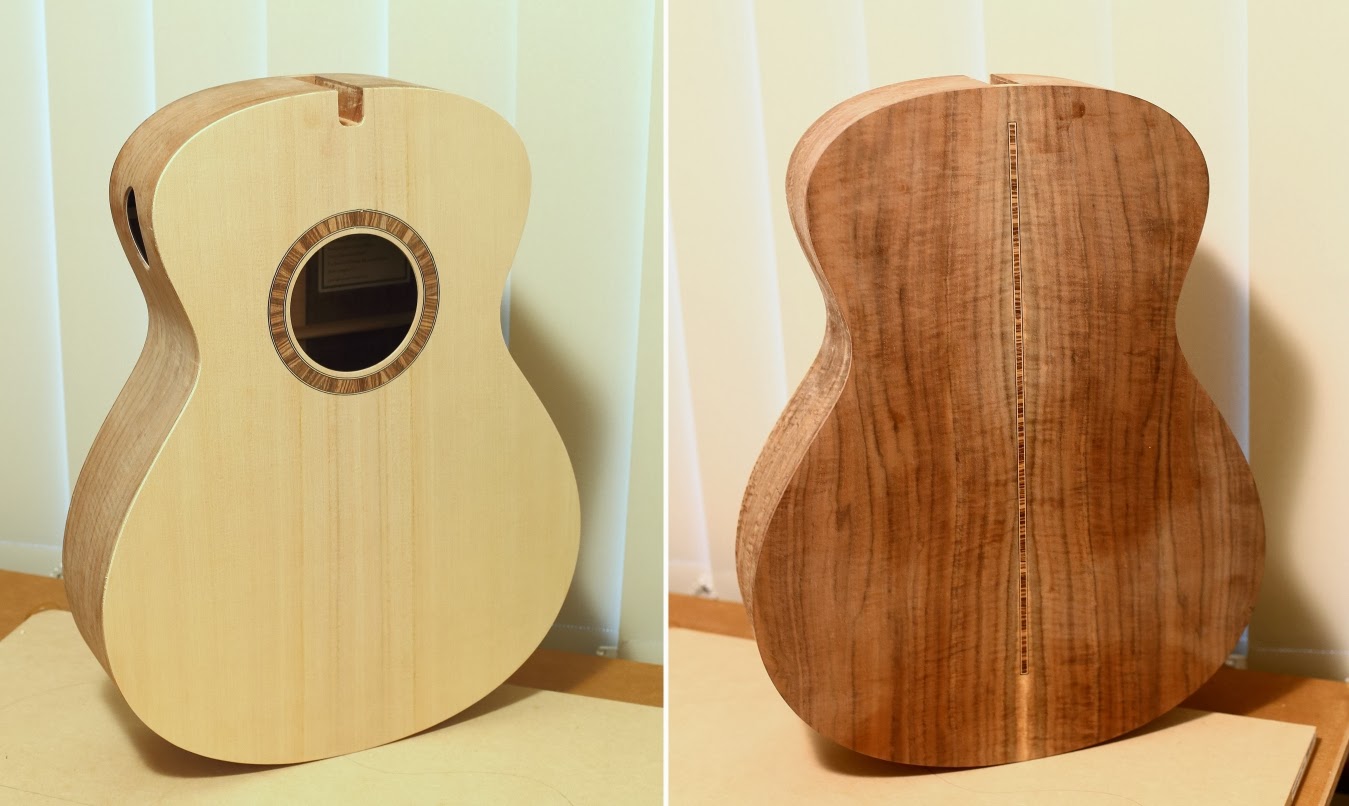With IT work in short supply, I've been "forced" to dedicate much more time to guitar building over the past couple of months. Well, I'm not really complaining!
It stands to reason, of course, that spending more time in the workshop will increase my output. Nevertheless, I've been pleasantly surprised by my rate of progress as my current guitar projects take shape. With the luxury of two days a week dedicated to building - and thinking about building - I've been able to make significant inroads into these three guitars, as well as identify a couple of steps in the build process that I feel could benefit from further thought and refinement. As usual, the next guitar will be better!
The guitar pictured above features a European Spruce soundboard, and a very attractive set of East Indian Rosewood back and sides. The florentine cutaway is only the second one I've attempted, and although it represents more work and an increased degree of difficulty, I'm satisfied with the way it's turning out.
 |
| European Spruce/East Indian Rosewood |
 |
| Port Orford Cedar/Claro Walnut |
 |
| Redwood/Claro Walnut OM |
With storage space at a premium, I'll be strongly resisting the urge to begin another guitar until this batch is complete and - hopefully - distributed to new owners!
Cheers
Pete




















